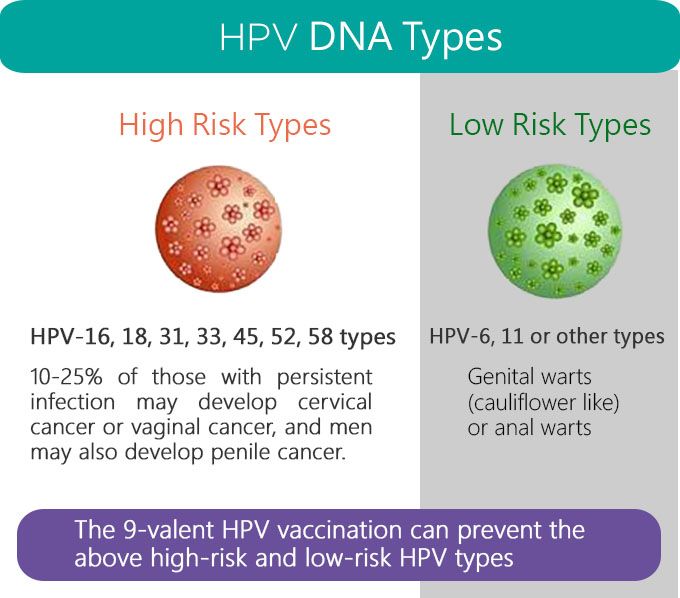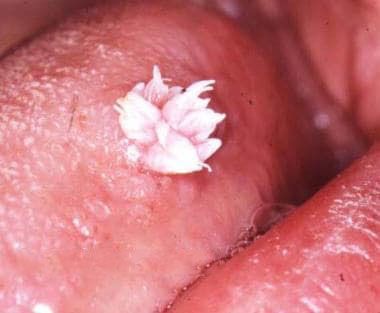
Human Papilloma Virus (HPV)
The human papillomavirus (HPV) consists of more than 100 types of virus. In 2017, the World Health Organization (WHO) estimated that the global prevalence of HPV infection is 21% in men and 11.7% in women. About 50% HPV infection is asymptomatic, If HPV infection persists, it may lead to cancer or genital warts.
HPV high risk type
The term “high risk type” refers to the at least 14 identified HPV types that are able to cause cancer, including cancer of the head and neck, cervix, penis, anus and throat. The most common high risk HPV types are HPV-16 and HPV-18, which account for approximately 70% of cervical cancers, while HPV-31, 33, 45, 52 and 58 are responsible for 15% of cervical cancers.
HPV low risk Type
The term “low risk type” refers to HPV types can cause anogenital warts and tumors to grow in the airway (respiratory papillomatosis). The most common low risk HPV types are HPV-6 and HPV-11, which account for 90% of genital warts.
HPV symptoms – genital warts (venereal warts or cauliflower)

Genital warts are one of the visible symptoms caused by HPV infection. They are mainly caused by low-risk HPV infecting epithelial cells. Among them, HPV-6 and HPV-11 are the most common types that can cause genital warts. Common clinical HPV symptoms are broccoli flower-like granulations, which often occur in the genitals, anus and other parts of the body.
HPV DNA Genotyping test
Performing HPV DNA genotyping test on swab samples to find out which HPV type is infected.
→ HPV DNA Genotyping Test, $690
How to eliminate/cure hpv?
Fortunately, the HPV infection can heal on its own. 67% of asymptomatic infections can be cleared within 12 months by relying on your own immune system, or 91% of asymptomatic infections can be cleared within 24 months. The key is to maintain a good body immune system.
What is the relationship between HPV and cervical cancer?
Cervical cancer is cancer of the lower part of the uterus where it connects to the vagina. Chronic high-risk human papillomavirus (HPV) carriers have an increased risk of cervical cancer. But there are other causes of the disease, such as smoking. However, most experts also believe that high-risk HPV is one of the most important causative factors. It is very common for women to have HPV.
Today, there are 14 types of high-risk HPV that can cause cervical cancer. About 70% of cervical cancer cases are caused by HPV types 16 or 18. However, most HPV patients, can rely on your own immune system to automatically eliminate or suppress the virus. If the body's immune system cannot eliminate certain high-risk types of HPV, it can cause cervical cells to mutate. If not detected and treated early, it may develop into cervical cancer. Pap smear is considered to be the most effective and simple way to detect whether there are cell mutations that cause cancer in the cervix or lower part of the uterus.
There are approximately 530,000 new cases of cervical cancer and 230,000 deaths caused by HPV infection every year.
Prevention of HPV Infection - 9-in-1 HPV Vaccine
Since there is currently no targeted drug treatment for HPV infection, you can only rely on your own immunity to clear it. Genital warts caused by HPV can be removed through external application of drugs, cryotherapy or laser treatment, but the HPV virus itself cannot be completely eliminated. Therefore, if you are sexually active (with different sexual partners), it is recommended to take the 9-in-1 HPV vaccine. As for women, regardless of whether they are sexually active or not, they should also take the 9-in-1 HPV vaccine to prevent future cervical lesions.
Cost of 9-in-1 HPV vaccine
$5,150
9-in-1 HPV Vaccine/3 shots
We will definitely reserve 3 injections for our guests so that they can be injected on time in the future.
(Text Only)

